What's New
Displaying results 4731 - 4740 of 4924
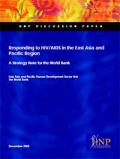
Resource | Publications,
With almost half the world’s population, Asia will determine the future of the global HIV/AIDS
pandemic. If prevalence rates in China, Indonesia, and India increase to numbers similar to those seen in Thailand and Cambodia, the rate of HIV/AIDS would double globally. Such growth would be
devastating for individuals—and for the region’s health systems, economies, and social fabric. HIV/AIDS is therefore a multisectoral development challenge and, consequently, a corporate priority for the World Bank.
This paper outlines a strategic direction for the World Bank in its multisectoral response to HIV/AIDS in the East Asian and Pacific region. It describes the risk of a large-scale HIV/AIDS epidemic in the region. It also spells out what can be done to avert the growth of HIV—and what government, civil society, and other partners are doing. And it identifies how the World Bank can assist at the country and regional levels. The World Bank will work with countries, civil society, the private sector, donors, and other key players to formulate country-specific strategies that try to respond to the needs of the population.
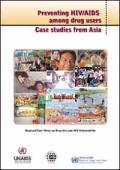
Resource | Publications,
In 1997 the Task Force on Drug Use and HIV Vulnerability commenced its operation in Bangkok. It immediately identified the lack of information concerning HIV/AIDS among drug users in the Asia region across three broad thematic areas: insufficient epidemiological data; limited knowledge within the region on policies related to drug use and HIV/AIDS; and, inadequate documentation and dissemination of good interventions. Subsequent to these observations, UN organisations and their partners have undertaken much work in order to fill this vacuum. The Asian Harm Reduction Network, along with other partners, has published two editions of the “Hidden Epidemic”, that provides details on the status of the HIV/AIDS epidemics among drug users in the countries of the region. In October 2000, the Task Force itself published the report “Drug Use and HIV Vulnerability: Policy Research Study in Asia”. These two publications have concisely addressed the issues of epidemiology and policy.
This current publication “Preventing HIV/AIDS Among Drug Users: Case Studies from Asia”, addresses
the third important area, the dissemination of good practices on HIV/AIDS prevention and care interventions among drug users. Emphasis is laid on addressing the practical aspects of how to do it. Each of the studies has been arranged in a format to promote the reader’s further consideration of the issues such that they might be replicated and adapted to their own particular context and needs.
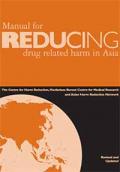
Resource | Publications,
Of all the epidemics of HIV (the ‘AIDS virus’) among the different groups in the community whose behaviours put them at risk, none is more rapid or devastating than epidemics among people who inject drugs. But at the same time, nowhere in the field of AIDS prevention are there such dazzling success stories than with prevention of HIV among injecting drug users.
This Manual grew out of the combined efforts of many people battling in Asia to stop HIV. It contains the accumulated experience of over decade of attempts to change policy and implement programs to stop this devastating scourge, collected over several years from many countries in Asia.
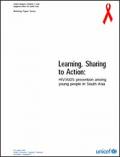
Resource | Publications,
Two decades of fighting the HIV/AIDS epidemic have shown that complacency is a deadly mistake, and dedicated actions against HIV/AIDS yield positive results. Countries such as Brazil, Cambodia, Thailand and Senegal have provided the world with enough evidence that it is indeed possible to reduce HIV infection rates. Success stories come from countries with both low and high HIV prevalence. We have also learned that young people and people living with AIDS are the most powerful, still untapped resources, for fighting the HIV/AIDS epidemic.
This Publication is a compilation of twenty six programme interventions, including eight in-depth case studies. It is designed to serve as a resource for policy makers, programmers, advocates, community organisations, UNICEF staff and partners.
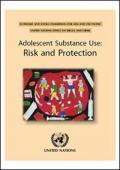
Resource | Publications,
Economic and Social Commission for Asia and the Pacific (ESCAP) emphasizes an integrated approach to substance use – prevention, treatment and rehabilitation – and works with diverse partners to build the capacity of youth and health workers to deal more effectively with substance use.
Adolescent Substance Use: Risk and Protection responds to young people's call for action against substance use. This publication provides an insight into planning and delivering effective treatment and rehabilitation programmes for adolescent substance users – in the Greater Mekong Subregion and beyond. It is intended to serve as a reference source for policy and programme personnel concerned with youth, health and social services in the ESCAP region.
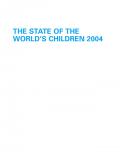
Resource | Publications,
Universal education might seem a relatively straightforward goal but it has proven as difficult as any to achieve. Decades after commitments and reaffirmations of those commitments have been made to ensure a quality education for every child, some 121 million children are still denied this right. Despite thousands of successful projects in countries around the globe, gender parity in education – in access to school, successful achievement and completion – is as elusive as ever and girls continue to systematically lose out on the benefits that an education affords.
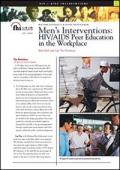
Resource | Publications,
In Viet Nam, there are few AIDS prevention programs or Behavior Change Communication (BCC) materials targeted toward sexual health and healthy living needs of the general population of men who may be susceptible to HIV infection through their sexual activity or drug use.
The "Workplace Peer Educators", a component of the Men's Intervention project, has trained men to serve as HIV/AIDS peer educators for both men from the local community and temporary migrant workers who are working in the factories. Some women working at the factories also benefit from the HIV/AIDS education and information provided.
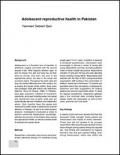
Resource | Publications,
Adolescence is a formative time of transition to adulthood, roughly concurrent with the second decade of life. What happens between ages 10 and 19 shapes how girls and boys live out their lives as women and men—not only in the reproductive arena, but also in the social and economic realms. Throughout the world, girls and boys are treated differently from birth onward, but at puberty this gender divide widens.
Boys enjoy new privileges, while girls endure new restrictions (Mensch, Bruce & Greene, 1998). In Pakistan, boys gain autonomy, freedom of movement, opportunity, and power (including power over sexual and reproductive lives of girls), while girls are systematically deprived of freedom and independent action. Only recently have the sexual and reproductive health needs of adolescents received attention in Pakistan. As part of an initial situation analysis, investigators conducted a study to explore unmarried adolescents’ knowledge, attitudes and sources of information about sexual and reproductive health, as well as to assess levels of physical and sexual abuse.

Resource | Publications,
HIV/AIDS is a children’s issue. In Vietnam, as elsewhere, the highest incidence of HIV infection occurs in the 20 – 30 age group, as well as the fastest growing rate of increase. Mother to child transmission is also increasing. And by the end of 2002, more than 10% of reported cases of HIV infection were under 19.
This particular study therefore seeks to contribute to a greater understanding of how the HIV/AIDS epidemic impacts on children. The conceptual framework is based on the Convention on the Rights of the Child, signed and ratified by Vietnam and almost all other countries in the world.
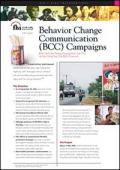
Resource | Publications,
Begun in May 2000, USAID-funded and FHI supported decentralized and comprehensive Behavior Change Communication (BCC) work reaches four provinces: Hai Phong, Can Tho, Quang Ninh and Binh Dinh. Targeted BCC work in Ha Noi, Dong Nai and Thai Binh began mid-2002. Provincial AIDS Standing Bureaus (PASB) designed the projects with FHI support. The local governments, PASBs and mass organizations implement the interventions, under the guidance of FHI. Basic, intensive and advanced BCC training and ongoing technical support from FHI are key to building local capacity in BCC work. The IEC centers of Provincial Health Services play a key role in the development of materials and for training for interpersonal communication through peer and health educators. Local artists and writers tailor messages and images to reflect local realities and target populations. FHI is encouraging use of private advertising agencies and marketing firms to develop effective media products for dissemination.





